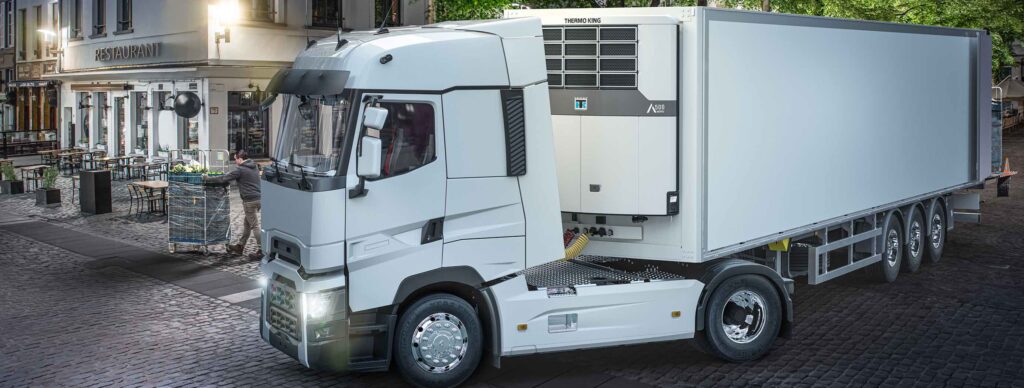Sustainable transport must be at the heart of food distribution in our cities, reports Kirsty Adams from the Cold Chain Federation’s Cold Chain Live conference.
London, UK: Reducing carbon emissions in cities is an important agenda item for any sensible government. And those who work in transport, especially in the UK, know many pieces from the sustainable transport puzzle are sat at their door. UK transport is on board – above all else the Cold Chain Live! Transport Zone, sponsored by Thermo King, carried content which supports and advises a sustainable transport future.
A key session in the Transport Zone was delivered by Eelke Westra of Wageningen University, James Lowman from the Association of Convenience Stores (ACS) and Valerie Lasserre from the European Cold Storage and Logistics Association.
Westra reflected on cold chain design in the last mile, and how it needs to incorporate systems for dark stores and volume increases in small spaces. Westra’s team has developed an insulated box which remains actively cool in last mile distribution.
“We developed the box for a Dutch online retailer, which maintains the temperature inside.”
Crowd sourced last mile
Crowd sourced last mile delivery was also discussed. For some in our audience, this was a new and interesting concept. Crowdsourced last mile delivery— which is also known as crowdsourced logistics—is a method of fulfilment that uses a network of non-professional, local couriers to deliver orders directly to customers. That means anyone really, including your neighbours.

Westra said, “a certain amount of trust is needed with crowdsourced last mile. Do you trust your fellow neighbours to collect your stuff and keep it in their home?”
Lowman said the debate of the day – as we see delivery go seven days a week, an explosion of local shops, the dominance of Deliveroo – is can we take this model forward on a modern sustainable basis?
Vehicle stickers in Paris
Lasserre discussed a sticker system implemented in France which delivery vehicles are obliged to use. The system determines access to low emission zones at restricted times to deliver chilled goods, depending on vehicle fuel and CO2 emissions. Certain cities, she explained, mark refrigerated vehicles as exempt.
“The difficulty with the low emission zones, is they are decided locally.” This means vehicles may have access, permissions, at certain times, in certain vehicles, but have different boundaries in the next city they travel to. The big question for hauliers, said Lasserre, is what investments do I make?
Lasserre talked about a digital tool her organisation has developed to help hauliers identify restrictions in the cities they operate in more easily.
She’s dubious about the shift she’s seeing to smaller vehicles in French cities. “Smaller trucks mean ten drivers, ten engines, to replace these big vehicles.”
Diesel free refrigeration
There was also a session in the Transport Zone devoted to diesel free refrigeration. Speakers included Transport Consultant Kirsten Tisdale, Lionel Curtis from Marshall Fleet Solutions, Brian Sagaseta from Chiltern Distribution, Kate Brown from Gist and Jon Jerrard-Din from ThermoKing.
During this session Jerrard-Din shared his company’s ambition to reduce one gigaton – one billion metric tons – of carbon emissions (CO2e) from its customers’ footprint by 2030.
What we concluded from the Transport sessions at Cold Chain Live! was that creative solutions, which pushed existing boundaries, were required to take current refrigerated transport to the next modern sustainable level. With delegates from across the globe at the event, and with high levels of cooperation between country cold chain organisations, it’s clear all are heading in the right direction.








